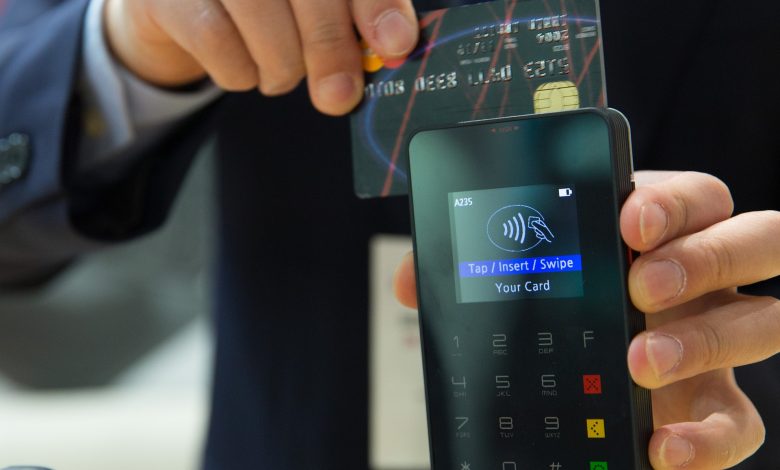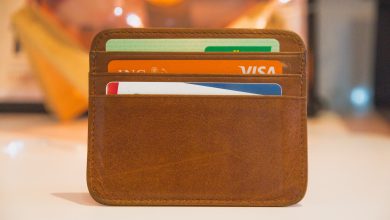How Credit Cards Work

On one hand, there are the people who tell you how amazing a credit card is and all the reasons why you need to get your hands on one. On the flip side, there are those who don’t share that opinion, and they may tell you that you need to stay away from credit cards. Both sides seem to make valid points, don’t they?
So the question is, who are you supposed to believe? The credit card does seem like a flexible payment method, but you don’t want anything that does nothing but bring you additional expenses and a headache to boot.
Sometimes, all you need to know to make the right decision is how something works. As far as a credit card is concerned, knowing how it works can help you to adequately decide if one is right for you.
The Workflow
The easiest way to imagine a credit card is to think of it as a provision of money on credit. Alternatively, you may also think of it as a special kind of loan. So when you get the card, there’s an amount that you’re given, which you can spend as you see fit. You can imagine that to be your loan amount.
Of course, all your loan money can be spent from the card, or you can use it to make cash withdrawals. The amount that you’re “loaned” depends on several factors, including your credit provider’s confidence in your ability to pay this loan back.
Each month you, get a bill detailing how much you’ve borrowed, and the amount that you’re required to pay. Should you clear your full bill every month, there are no interest charges. However, cash withdrawals accrue interest daily. This interest begins to accumulate from the day you make the withdrawal.
You usually want to avoid making cash withdrawals if possible since they result in your receiving of charges. Additionally, the cash withdrawal interest rate is substantially higher than that which is applied when you make purchases from the card.
Should you not pay off an outstanding balance in full, interest is charged. This interest is typically backdated, so even something you bought at the beginning of the month can result in your being charged an entire month’s interest.

Terms of Interest
Before going any further, it’s important to go over all the terms that are synonymous with credit cards, as they can help in your understanding.
APR
This is a very important one, as it speaks directly to the amount of interest that you are required to pay. The abbreviation APR stands for Annual Percentage Rate. This rate is used against your transactions to calculate your interest.
As stated before, the interest is only calculated if you don’t pay off your statement balance in full. Any outstanding balance begins to accrue interest based on that rate from the payment due date onwards.
Billing Cycle
This is the monthly accounting period set for your credit card. During the billing cycle window, you make your purchases and your withdrawals as you see fit. When it ends, you are provided with a bill that outlines what you are required to pay and what contributed to it. You are usually given a month to pay the bill after you receive it.
Available Credit
This is a statement of how much you can spend from the card before you get to the limit. Imagine that you have a credit card that has a limit of $4,000. If you were to spend $800 in a month, the $3,200 that remains is known as your available credit. If you should make a $500 payment towards your bill, your available credit then becomes $3,700.
Statement Due Date
This date, which is usually displayed on your credit card statement, is an indication of the date by which a payment must be made. The bill also features a minimum acceptable payment. Your payment for the bill must be at least the minimum figure, and it must be paid by the statement due date. Doing so keeps your account in good standing.
Credit Limit
This speaks to the amount of money that you can spend before your credit card balance hits the assigned limit. When you apply for a credit card, the issuer considers several factors in determining what your credit limit should be.
The rule of thumb is that a better credit score and a higher income usually results in a better credit limit.
Balance
The balance is what people refer to when they mention their credit card debt. This is a measure of the unpaid amount of your bill. Consider a credit card with a credit limit of $1,000. If someone were to spend $400, the credit card balance would be $400 until some or all of it is paid off. If a $300 payment is made, the balance then becomes $100.
Minimum Payment
This is a measure of the amount of money that should be paid towards your bill monthly. It tends to be calculated as a percentage of your total balance. For example, many banks calculate your minimum payment as 5% of your total bill. If you have a balance of $500, then your minimum payment in this instance would be $25. Though you can clear the whole balance or some arbitrary amount if you want to, the minimum payment is all that the bank requires for your account to remain in good standing.
Of course, this payment must be made by the due date. If it is not, then there are two downsides that you need to deal with. The first and less detrimental problem is the fact that the institution is likely to charge you a late fee. This is not so bad because, once that late fee is paid, it has no bearing on anything thereafter. The real problem lies in the second downside, which is where the credit bureau comes into play.
When such an event is reported to a credit bureau, that affects your credit score and, by extension, the amount of credit that you can get in any form. While the effect is not permanent, it can affect you for up to seven years.
Making your minimum payment is the requirement, but if you can, try to pay the entire statement in full. Doing so allows you to avoid interest, which can be a real pain.
The Real Cost of Credit Card Interest
Credit card interest charges can be a real problem when they spiral out of control. This is the reason that credit card debt is known as being one of the most expensive kinds of debt that exists. There is a monthly finance charge that accounts for interest and other charges.
The way how the minimum payment system is designed can have you in credit card debt for years. Therefore, you need to go above that minimum payment as much as is possible. If you only pay the minimum, you could have the debt to deal with for upwards of ten years. The worst part is that 50% or more of what you pay is nothing more than interest charges.
Most credit card issuers only begin to place interest charges against your account when your statement due date comes around. This means that a bill paid in full never generates any interest. If you use your credit card responsibly, then this grace period can be a big help in maintaining an interest-free account.
Credit Card Fees
Interest fees that are wrapped up in the finance charge are not the only fees that apply to owning a credit card. Here is an outline of some of the other fees that you should be aware of:
- Foreign transaction fees: As with most platforms, a fee is charged whenever a transaction occurs that requires currency conversion. While you may not be charged this with every card issuer, many of them are known to charge these fees.
- Cash advance fees: A credit card can seem like a convenient way for you to get some cash when you run out of funds. While it is easy to accomplish, it is recommended that you don’t take cash advances from your card. The high fees that are associated with these transactions are not worth it.
- Late fees: If you pay your bills on time, then you never have to experience paying a late fee. This is a charge that is only applied to your account if you don’t make at least the minimum payment by the stipulated date.
- Balance transfer fees: You can transfer your balance to another credit card if you wish. This is usually done with 0% APR cards to mitigate interest payments. Should you choose to do this, however, a fee is usually charged, which is calculated as a percentage of the amount being transferred.
- Annual fees: These fees are billed annually, and they cover the benefits that you get from owning the card. There are some cases in which the annual fee amount is broken into smaller monthly payments. Many cards don’t have an annual fee, so you may want to check one out.

Advantages of Credit Cards
Here are some of the main advantages that you get from owning a credit card:
- Losing it is less impactful than losing cash. While getting lost or stolen cash back typically doesn’t happen, you can prevent losses easily when your credit card is taken. All you need to do is cancel the card. Even if it were to be used in a fraudulent manner, you are likely to be reimbursed.
- Credit cards are more widely accepted than prepaid or charge cards are.
- You can get things that you need immediately and pay for them later.
- There are benefits for you to enjoy, such as cashback or travel rewards.
Disadvantages of Credit Cards
Here are some of the downsides that come with owning a credit card:
- There are high interest rates to deal with if you don’t pay your balance in full each month.
- There are various fees and penalties that you may have to deal with.
- Your debt can begin to spiral if you miss a single payment. It’s easy to get caught in the debt cycle.



